Tillandsia ixioides is a species in the genus Tillandsia. It is native to South America. Two subspecies are recognized:
- Tillandsia ixioides subsp. ixioides - Bolivia, Uruguay, Paraguay, northern Argentina
- Tillandsia ixioides subsp. viridiflora(Rauh) Gouda - Bolivia
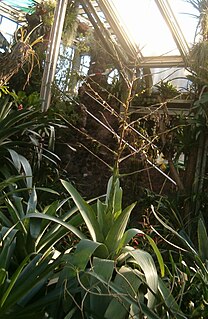
Tillandsia krukoffiana is a plant species in the genus Tillandsia. This species is endemic to Bolivia.

Tillandsia vernicosa is a species of flowering plant in the Bromeliaceae family. This species is native to Bolivia, Argentina and Paraguay.

Tillandsia paleacea is a species in the genus Tillandsia. This species is native to Bolivia.
Tillandsia laxissima is a species in the genus Tillandsia. This species is endemic to Bolivia.
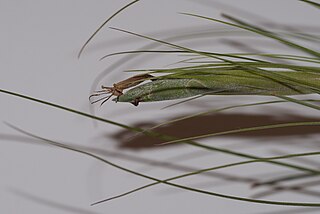
Tillandsia juncea is a species in the genus Tillandsia. This species is native to northern South America, Central America, Mexico and the West indies.

Tillandsia recurvifolia is a species in the genus Tillandsia. This species is native to Bolivia, Paraguay, Uruguay, Argentina, and Brazil.
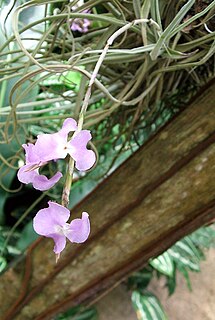
Tillandsia streptocarpa is a species of flowering plant in the Bromeliaceae family. This species is native to Bolivia, Peru, Argentina, Paraguay, and Brazil.

Tillandsia stricta is a species in the genus Tillandsia. This species is native to South America and Trinidad.

Tillandsia tenuifolia, the narrowleaf airplant, is a species in the genus Tillandsia. This species is widespread across much of South America and the Caribbean islands.
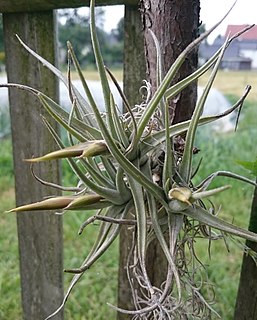
Tillandsia xiphioides is a species in the genus Tillandsia. This species is native to Bolivia, Brazil, Paraguay, Uruguay, and Argentina.
Tillandsia argentina is a species in the genus Tillandsia. This species is native to Bolivia.

Tillandsia capillaris is a species in the genus Tillandsia. This species is native to southern and western South America.
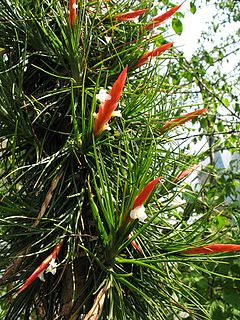
Tillandsia caulescens is a species in the genus Tillandsia. This species is native to Bolivia.
Tillandsia confinis is a species in the genus Tillandsia. This species is native to Venezuela, Bolivia Colombia, Peru, northern Brazil, and Ecuador.
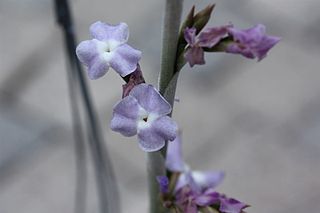
Tillandsia duratii is a species in the genus Tillandsia, subgenus Phytarrhiza. This species is native to Bolivia, Paraguay, Argentina, Uruguay, and Brazil.

Tillandsia fendleri is a species in the genus Tillandsia. This species is native to the West Indies and South America.
Tillandsia funebris is a plant species in the genus Tillandsia. This species is native to Bolivia.
Tillandsia muhriae is a species in the genus Tillandsia. This species is native to Bolivia.
Tillandsia rectangula is a plant species of flowering plant in the Bromeliaceae family. This species is native to Bolivia and Argentina. Tillandsia rectangula was described and the name validly published by John Gilbert Baker in 1878. Tillandsia rectangula is a species in the genus Tillandsia which contains between 713 and 777 species and belongs to the family of the Bromeliaceae. The type species of the genus is Tillandsia utriculata. The perennials prefer a sunny situation on fresh to moist soil. They tolerate temperatures only above at least 1 °C.The plants are suited for cultivation in a temperate house.













